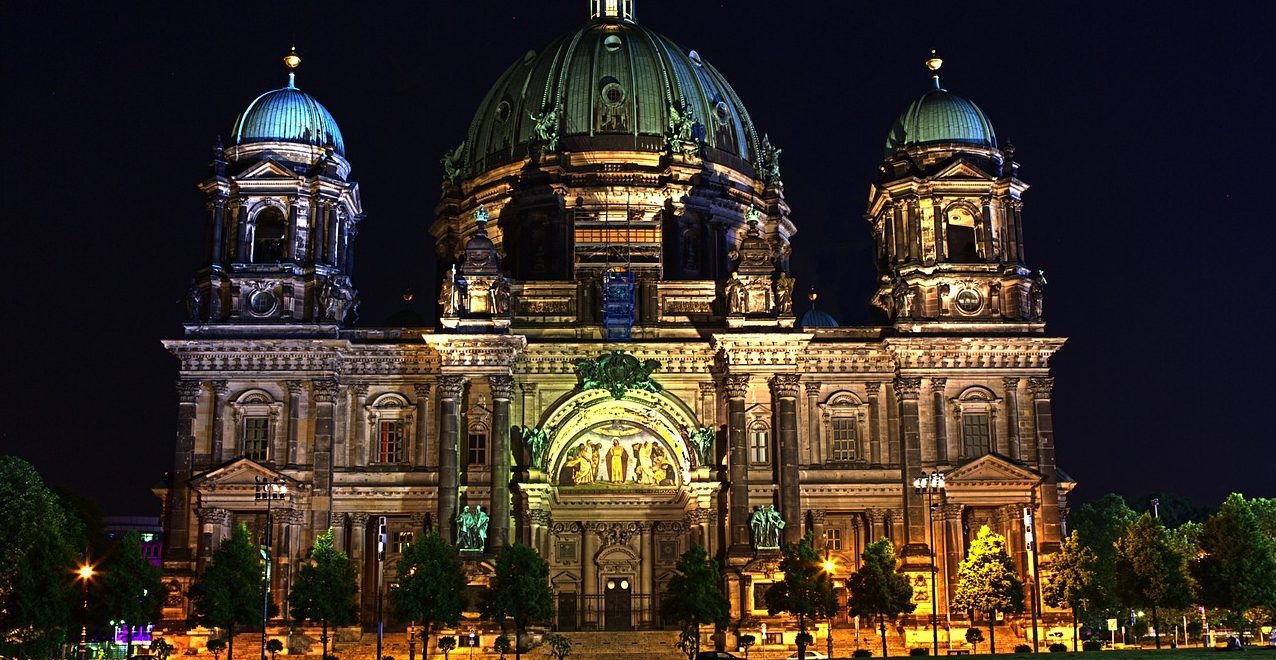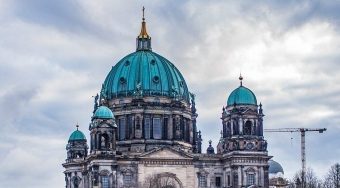It is well known that Berlin has a large number of museums, spanning the whole of the city, covering subjects from archaeological findings of the ancient world, to local history and international popular culture. As one of the cultural capitals of Europe, there is a vast heritage to be explored throughout these storehouses of knowledge. The rich history of the city, in all its glory and terror, can be fully appreciated via the museum exhibits, so the tragedies of the past are not to be repeated. Many of the best-known museums are located on Museum Island, but there are also many important museums across the city.
Museum Fur Naturkunde
In the Mitte district of town is Berlin’s own Natural History Museum. Boasting a collection of over 30 million specimens from the mineral, zoological and paleological worlds, including more than 10,000 type specimens. The museum was renovated in 2007, now featuring a great hall with explanations of biodiversity and the evolutionary process. The most famous exhibits are the world’s largest mounted dinosaur skeleton: a Giraffatitan, as well as an incredibly well-preserved fossil of the earliest known bird, an archaeopteryx. There is also one of the best-preserved Tyrannosaurus skeletons worldwide. As well as the dinosaur hall, there is a huge mineral collection representing over 75% of global mineral types, as well as many animal specimens from animals that are now extinct. It is also a centre for ongoing research into the broad history of the natural world. The government have decided to invest a whopping €600 million to improve and expand the museum, as of late 2018.
Wow. Was für eine Nacht. Wir sind überwältigt über den Besucheransturm. Hier eine kleine Impression aus dem Sauriersaal. Lange Nacht der Museen Berlin#lndmberlin
Posted by Museum für Naturkunde Berlin on Saturday, August 25, 2018
Stasi Museum
A museum dedicated to the austere and repressive life of the people in East Germany under the communist rule, the location is the former headquarters of the Stasi, East Germany’s secret police. It is also the filming location for much of the Oscar-winning film ‘The Lives of Others’. You can walk in and around the former offices and meeting rooms of the organisation, glimpsing the harsh reality of totalitarian special services. Many objects of interest remain from the time, such as unsophisticated surveillance devices disguised as everyday items. Free tours are offered daily in both German and English language, which can be especially beneficial to add contexts to the exhibitions. If you are unable to make it on a tour, the atmosphere of the place speaks for itself. The museum is also a research facility for the political system of Eastern Germany.
Posted by Stasimuseum on Friday, October 5, 2012
Deutsches Technikmuseum
Befitting the well-earned reputation for German engineering, the German Museum of Technology is an immersive display of engineering, technology and science across its history. A perfect place for those who love to tinker with and explore the working parts of mechanical devices, as well as people with an affiliation to particular modes of transport. The museum has exhibits of many trains- from early steam locomotives to modern rail cars- as well as aviation and maritime exhibition halls. On a smaller scale, you’ll find day to day items like cameras and computers as they have been developed through the years. Casting our eyes to historical daily life there are also two windmills, a brewery and an old forge powered by a waterwheel. Science buffs will also enjoy the dedicated scientific exhibit Spectrum. You will find the museum of Trebbiner Strasse with an aeroplane atop the roof.
Wir wünschen allen Berlinern einen schönen neuen Feiertag! Wir haben heute von 10 bis 18 Uhr geöffnet und freuen uns über Euren Besuch.© SDTB / Foto: Henning Hattendorf
Posted by Deutsches Technikmuseum on Friday, March 8, 2019
Topography of Terror
Taking the initiative to expose the appalling crimes and dark history of the city by the Nazi government, this is a freely available, open-air exhibition of the true nature of the Nazi atrocities. It is located at the former headquarters of the SS and the Gestapo. There are three permanent exhibitions: The History of the Site, the Gestapo and SS, and the Propaganda and Terror of Berlin between 1933-1945. There are also a number of temporary exhibitions. The main focus is on photographic and text-based documentation, as well as some audio and film recordings. There is a library with a focus on the SS, the Gestapo and National Socialism in general. Be prepared, the museum successfully conveys the heartbreaking and chilling history of this darkest time in European history.
Posted by Topographie des Terrors on Monday, April 15, 2019
Museum Berggruen
A bit further out to the western side of the city, opposite to the Charlottenburg Palace, is this museum of modern art, full of masterpieces from many of the movement’s great fine artists. It is the donated collection of Heinz Berggruen, who began his collection with a piece by Klee. Alongside others of Klee’s works, you can find paintings by Picasso, Matisse, Pittoni, Braque, Giacometti and Condo. The collection is now part of Berlin’s National Gallery and has seen a number of expansion projects in the first decade of the 21st century.
Museum BerggruenBerlin-Charlottenburg, Schloßstr. 1© Staatliche Museen zu Berlin. Foto: SMB
Posted by Museum Berggruen on Thursday, July 8, 2010
Kathe Kollwitz Museum
Here you will find the world’s largest collection of Berlin’s most famous female artist, Kathe Kollwitz’s works. It was established in 1986 and currently holds over 200 pieces of art, rangely diversely, from paintings, sculptures, drawings, posters, printed graphics and woodcuts. The content of the work largely revolves around the themes of war, poverty, suffering and love, infused with a deep sense of humanity. Kollwitz was working for over 50 years in the Prenzlauer Berg, focusing her work on her neighbor’s plight in poverty and suffering, but also their bright hopes. The upper floor contains a sculpture of Kollwitz herself by Gustav Seitz, which is over 2 metres tall. There are also a number of special exhibits throughout the year, all housed in this late 19th century neoclassical villa on Fasanenstrasse.
Posted by Käthe-Kollwitz-Museum Berlin on Wednesday, July 4, 2018




